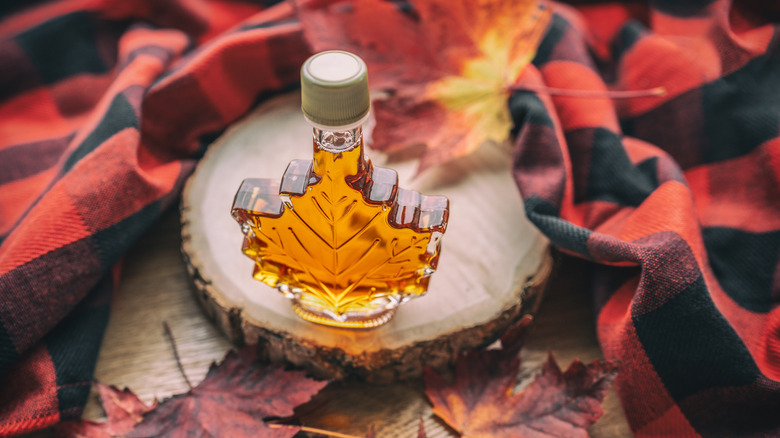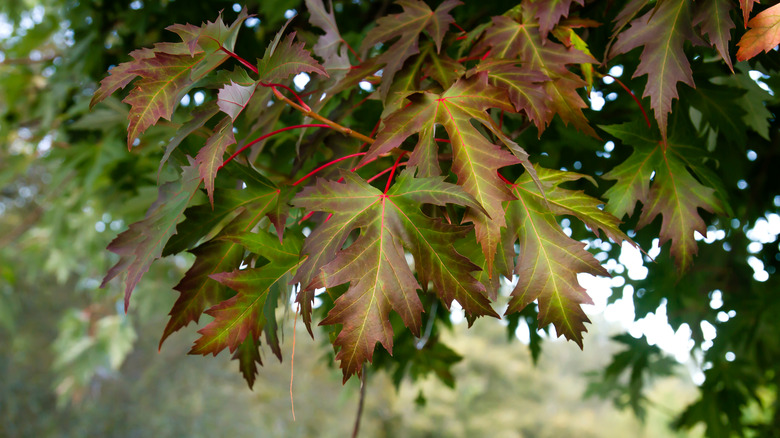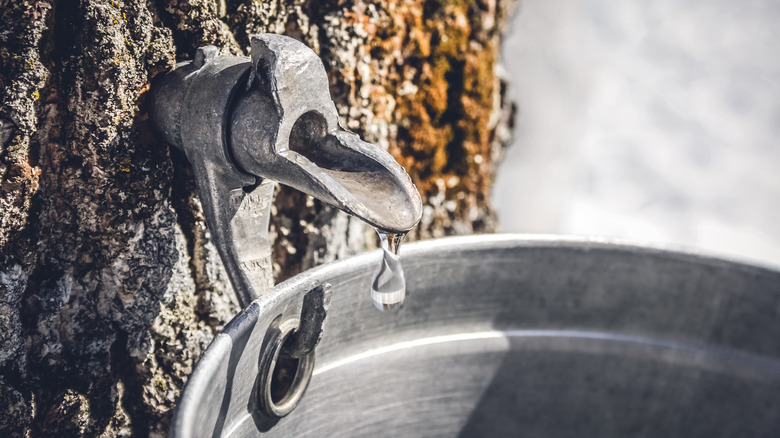The Intricate Art Of Making Maple Syrup
A generous drizzle of pure maple syrup adds a decadent touch to almost any dish that calls for a caramel, nut-like sweetness. It's one of the world's finest sweeteners and highly versatile too: you can make a roast turkey kissed with maple and smoke, whip up a luscious salad dressing, or sweeten up an old-fashioned whiskey sour. It's what makes classic American pancakes look so darn sexy!
Maple syrup is one of the few natural sweeteners in the world that brings added health benefits. It can fortify your meal with a few extra minerals like copper or zinc, and also has high antioxidant activity. So why isn't it consumed more often? Well, it seems that the production of maple syrup has changed very little in comparison: The process remains largely natural to this day, which keeps its price in a premium range. While we can't change the high price of this fine syrup, we'd like to tell you a story about how maple syrup is actually made — so you can appreciate it even more.
Why does Canada keep the reserve of maple syrup?
Maple syrup doesn't come from just any maple tree. While some amounts of sweet syrup can be collected from red or silver maple, the highly prized maple syrup comes from Acer saccharum (or sugar maple), a tree that grows only in the north-east regions of the U.S. and around the Great Lakes in Canada. Because sugar maples aren't widespread, maple syrup production is extremely centralized; Canadians have complete control over it. With 70% of the world's maple syrup produced in Quebec, it's no wonder Bloomberg compares it to the Canadian "maple cartel."
Regionality isn't the only thing that makes maple syrup so precious; maple sap can only be collected during a short season of a few months at the end of each winter. It needs cold nights and sun during the day to be collected, and these particular conditions cannot always be guaranteed. To avoid shortages and regulate the market price, Canadians maintain a maple syrup reserve in a huge warehouse in Quebec.
From the tree to the bottle, how maple sap becomes maple syrup
Every year around the end of February comes the magical time when a sugarmaker (an old term for maple syrup makers) begins selecting maple trees to tap. They make the decision based on the size and age of the tree; the sugar maple must be at least 40 years old to be tapped. Some smaller producers make holes in the tree and hang buckets, while larger producers use pipes to push the maple sap directly to the tanks in the sugarhouse (a place where maple sap is processed into syrup).
The maple sap is collected until the first buds appear on the trees, symbolizing the end of the season. Although some of the most exquisite Canadian maple syrups, such as Escuminac Extra Rare Maple Syrup, are made using only the virgin sap from the first few days. Once all the sap is collected, comes the crucial step of evaporating water: maple sap contains only 2% sugar, so it's boiled down until it reaches 67%. The remaining syrup is then purified by special filters and can finally be graded based on its color, which determines the flavor profile: the darker the syrup, the more pronounced the syrupy notes. There's a lot that goes into making a bottle of maple syrup but we're sure you'll agree — it's worth every minute of it.


